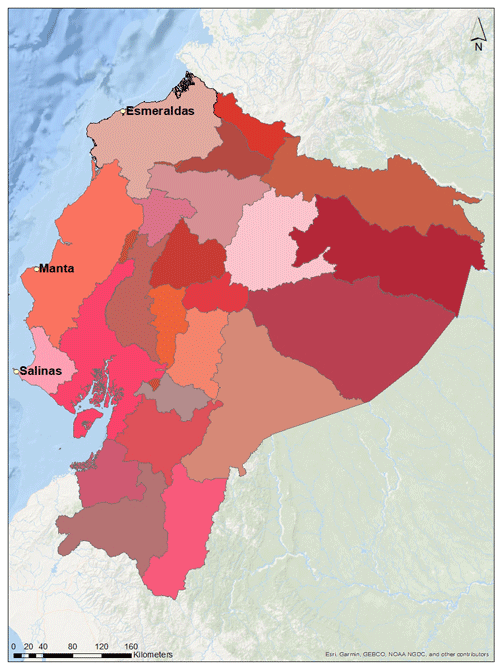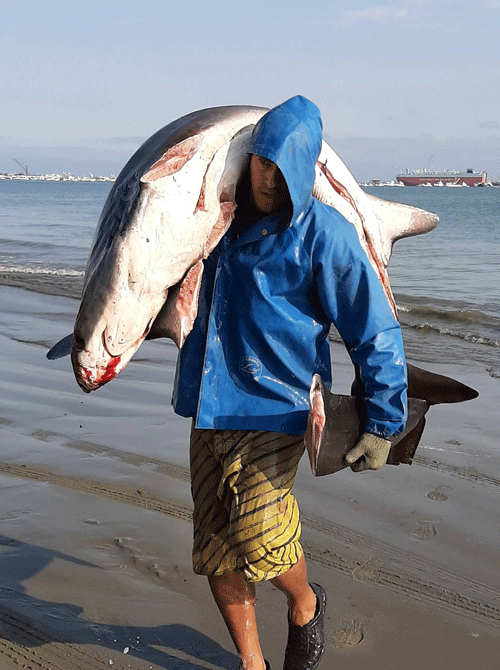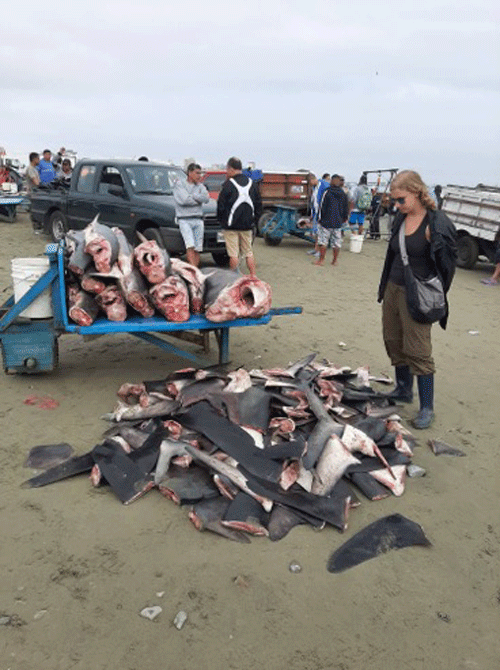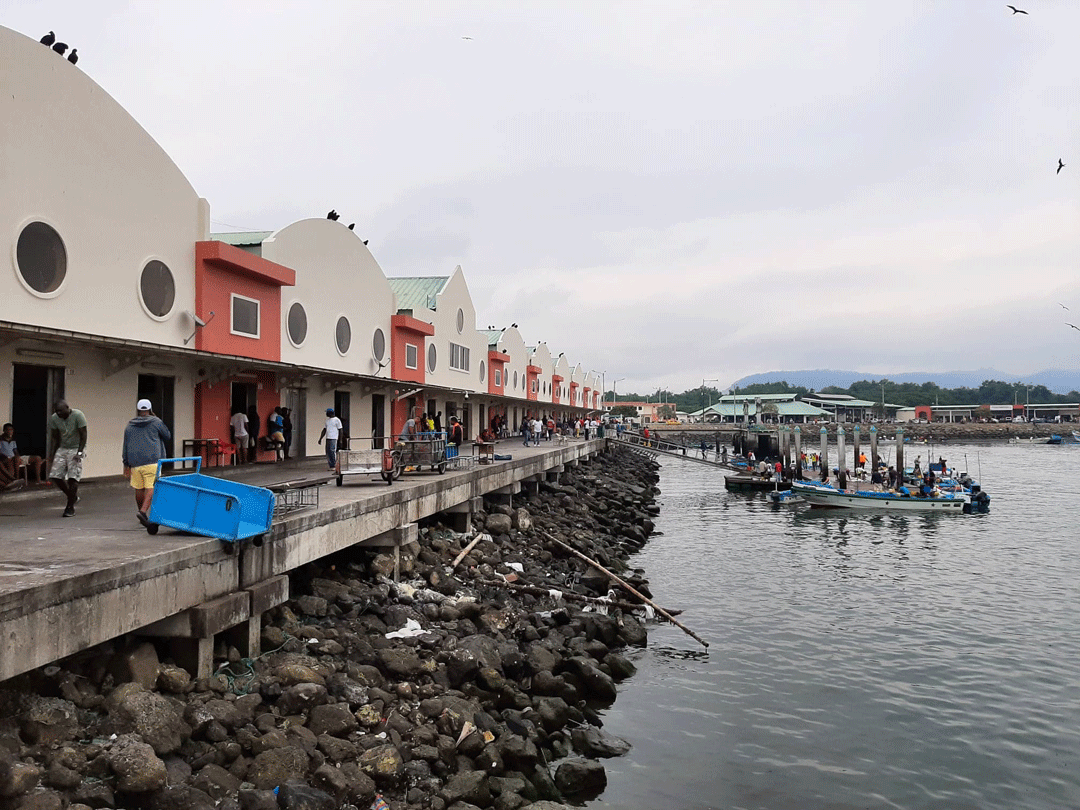Secret Sources – Shark Markets in Ecuador
After spending a few months in the lab, it was finally time to pack our field bags and head to Ecuador where we would spend the next few weeks collecting samples and testing the Lab-on-a-Chip at three artisanal fish markets (Fig. 1).

Map of Ecuador with the three market locations (1) Santa Rosa, Salinas. (2) Playita Mia, Manta and (3) Puerto Pesquero Esmeraldas. Image © Joana Borges and Guuske Tiktak, MMU.
Each market was completely different from the next, all sporting their own unique brand of organized chaos. Every time I visit Ecuador, I learn so much from the fisherman about how the trade works and about the consumers of shark meat. We first visited Santa Rosa, Salinas. This landing site had the most diversity, so species such as the pelagic and bigeye threshers, blue sharks, smooth hammerheads, mako and silky sharks were commonplace in the market. Occasionally you will come across tiger sharks and scalloped hammerheads as well as various species of wedgefish, rays and angel sharks. Mako sharks were the most commonly landed shark this time at Santa Rosa, which coincided with the days leading up to the CITES CoP18. It was a relief to see that they had been added to Appendix II of CITES a few days later.

Guuske taking a sample of a pelagic thresher at Playita Mia, Manta. Photo © Alexandria Gabb, MMU.
Obviously fieldwork isn’t fieldwork if it all goes according to plan, so we turned up on one of our sampling days to find that the fisherman had planned a 4-day strike! They were protesting piracy in the area meaning that we could only collect samples for half of the days we had planned.

Fisherman carrying pelagic thresher shark across the beach at Playita Mia, Manta. Photo © Alexandria Gabb, MMU.
The second market was Playita Mia located in Manta, Manabí, which, unlike Santa Rosa, is on a beach. It is a very fast-paced market, the sharks are landed from all sides of the beach and you have to be very quick taking samples as the fisherman will just take the shark away. There were a few instances where if you were in the way, a fisherman would almost land a shark on top of you. I was close to being under a 60 kg pelagic thresher (Figs. 2-4)!

One of our researchers (Alex) standing next to shark fins at Playita Mia, Manta. Photo © Guuske Tiktak, MMU.
Esmeraldas is the northernmost market of the three and has the least diversity in landed shark species (Fig. 5). Travelling between the markets involved a 6-10-hour night bus ride, which is no minor feat when you are lugging around multiple suitcases full of field equipment and a huge cool box. Most of the markets started before sunrise, around 4 or 5 am and carried on till around 4 pm in the afternoon. Even though I have been to the markets here before, the nerves of speaking Spanish and seeing so many sharks landed per day, could still be incredibly overwhelming.

Puerto Pesquero Esmeraldas. Photo © Alexandria Gabb, MMU.
While at the markets, we sampled from each of the different types of shark meat we came across (Fig. 6). Each sample was tested on the LOC device in the field, and we’ve also brought samples back to the lab in the UK for conventional genetic testing and we’ll let you know the results in a future blog!

Shark meat sold at Santa Rosa (left) and Playita Mia (right). Each of the sharks landed has a unique colour to its ‘meat’, for example a blue shark is very white in colour (right) and can be resold as ‘white fish’, ‘corvina’, ‘sword fish’, ‘wahoo’ etc, whereas pelagic threshers (left) and scalloped hammerheads have a more pink colour to their meat allowing them to be sold as something different again. Photo © Alexandria Gabb, MMU.
